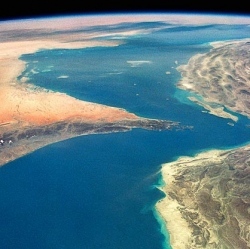
Tucked away in one of the neighborhood’s utilitarian office buildings is a technology company that harkens back to the early days of Silicon Valley: Planet Labs, founded by former NASA engineers, which builds satellites to photograph the Earth.
Even so, the company doesn’t need a ton of space: Its satellites are about the size of a breadbox. The company recently recruited a batch of Stanford University students and built 28 satellites in 17 days in its cramped SoMa offices (pictured above). In early January, Planet Labs (initially called Cosmogia) sent 28 satellites to the international space station; earlier this month, NASA began deploying them into orbit. Sixteen are now in orbit and transmitting photos.
planet-labs-via-nasaPlanet Labs says its fleet of small, low-cost satellites will provide, for the first time, a full set of satellite images for the entire planet with none more than 90 days old. The company hopes a single, consistent data set will drive better environmental research.
“When you count all of the available satellites with all the different sensors, there’s no one homogenous view of what the Earth looks like in sharp enough resolution to tell us what’s happening,” co-founder and CTO Chris Boshuizen told Singularity Hub.
The average age of an image in Google Earth is 36 months, Boshuizen said. In some cases, adjacent images show two different seasons. That’s because it’s prohibitively expensive, unless you are a national military, to task one of the camera-equipped satellites with a particular subject, most consumers simply wait until a deep-pocketed buyer requests the photo they also want.
